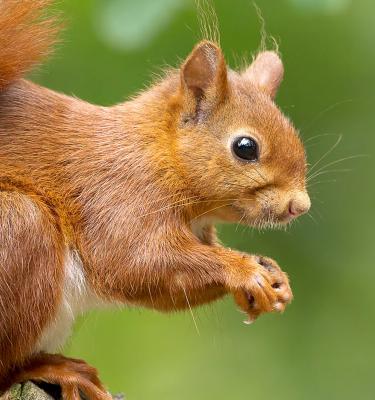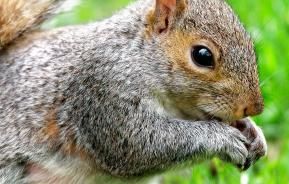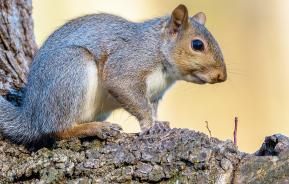When did you last see a red squirrel and where were you? Or perhaps you’ve never seen one? There are only about 140,000 red squirrels left in Great Britain compared to 2.5 million grey squirrels - and because they are also very shy and timid, if you’ve seen a red squirrel lately, you’re very lucky!
Why are red squirrels so scarce and are they endangered?
The red squirrel is classified as ‘Near Threatened’ in England, Wales and Northern Ireland but is more commonly found in Scotland.
The reasons for the red squirrels decline are many and we can’t entirely blame the grey squirrel. The latter is not indigenous to Britain (whereas the red squirrel is) but with its introduction to this country back in the 1870s, the grey squirrel has thrived while the red has slowly and steadily fallen in numbers. The same is true in Italy where in 1948 just 2 pairs of grey squirrels escaped captivity and now the surrounding population of red squirrels is in dangerous decline. But why?
First, a little about the red squirrel…
Smaller than its grey cousin, the red squirrel is normally about 8–9 inches long and has a tail of about 6–8 inches. It has, as the name would suggest, a distinctive red coat and tufty ears which get even tuftier in the winter. It’s a species of tree squirrel and prefers to be up in the tree canopy, but the red squirrel can also swim should it need to.
The red squirrel likes to live in a den - or drey - which it makes for itself out of bark, twigs, leaves and moss in the fork or branches of a tree. Its life expectancy in the wild is just 3 years (as compared to 7 to 10 years in captivity). And with red squirrel kittens having a survival rate of between just 20% to 50%, it’s not easy for our dwindling red squirrel population to thrive.

So, Why the decline?
The highly adaptable (and slightly more adventurous) grey squirrel gets a lot of bad press about the red’s decline, but it’s not entirely their fault. A combination of complex factors have come together over the last 150 years to stack the odds against the smaller native red:
- The red squirrel isn’t as well as adapted for survival as the grey. As red squirrels don’t hibernate, their stashes of winter supplies which they’ve hidden during the warmer months are crucial to their survival. But their spatial memory isn’t as accurate as the grey’s which means they’re not as good as remembering where they’ve hidden their winter food reserves.
- Unfortunately the grey squirrel carries the squirrel Parapox virus. It’s a bit like Myxomatosis for squirrels and whilst it doesn’t seem to harm the greys, it kills the reds. Between 1900 and 1920 (just a few decades after the arrival of the greys in this country), the reds were almost wiped out by the virus.
- Because of their beautiful coats, red squirrels were hunted right up until 1927 and in other parts of Europe they still are.
- The erosion of the red squirrels’ preferred habitat by man is also partly to blame and while the grey squirrel can survive with a density of up to 8 squirrels per hectare of woodland, a red squirrel struggles to compete with a preferred density of population of 1 per hectare in broadleaved woodland or 0.1 per hectare in coniferous woodland.
- When put under pressure due to challenging environments or scarcity of food, red squirrels don’t breed as much.
It’s not all bad news for the red squirrel
There are lots of projects afoot across the UK aimed at supporting the recovery of the red squirrel. In 1998 a project was started on the Island of Anglesey to eradicate the grey squirrels and support the small but remaining population of reds. Combined with an introduction of more broadleaved woodland, Anglesey now has the largest population of red squirrels in Wales.
And Anglesey isn’t alone. Brownsea Island in Poole Harbour has a thriving population of red squirrels as does the Isle of Wight and you’ll find 85% of our red squirrel population in Scotland or the north of England.
What to look out for
The red squirrel is generally much more timid than the grey and they can be hard to spot. Lookout for tell tales signs such as large dreys in the trees, scratch marks on the bark or the remnants of pinecones which may look a bit like an apple core once the seeds have been stripped off. And if you are lucky enough to spot one, we’d love to hear about it via our social media channels.








